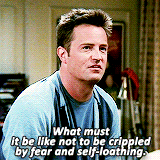The plan for a safe injection site in Philadelphia was unveiled to the public on January 23. On that Tuesday, there was a numerous amount of questions asked and an even larger volume of opinions given. I decided to spend my time diving into this plan to try to answer the questions of some, but most importantly, try to sway the opinions of many.
What the heck is a safe injection site?
Can people just walk into this safe injection site and get drugs?
Are my taxes going to pay for this?
It makes perfect sense that the people of Philadelphia would be concerned and curious about this plan, especially when it directly involves the idea of legally giving someone permission to use illegal drugs.
Among all of the articles that I read, it was pretty much set in stone that this was a plan for a 'safe injection site'. However, the correct term is CUES: Comprehensive User Engagement Site. In order to fully understand why the city of Philadelphia is even considering this plan as an option, it is crucial that the term 'safe injection site' is no longer used.
The term 'safe injection site' simply implies that, at such site, users are ONLY shooting up drugs (such as heroin), and it completely dismisses the fact that there are other opioids taken. The goal of this plan is written in the name itself. The site will engage drug users on a regular basis, encourage them to go to treatment, and help them transition into a treatment service effortlessly.
The CUES is very similar to an everyday healthcare facility. The user will check in at a front desk and receive a number. Eventually, the user is called by their number and is assigned a booth at the injection room. At their assigned booth, the user prepares their drugs using sterile, harm- reduction supplies that the facility provides.
The user is always under the supervision of registered nurses. Later on, the user is sent to a chill-out area where they are observed to make sure they do not have a delayed overdose. The drugs are not provided at the CUES. Users stop in with their own drugs. The CUES provides sterile syringes, cookers, filters, water, and tourniquets.
The nurses and healthcare staff also provide wound care, immunizations, as well as their supervision on how to properly use the drug and how to take a safe dosage.
While going through my research, I came across a shocking fact. A ton of these facilities are already up and running in Europe, Australia, and Canada. If they don't have the facility up and running already, they have a plan in the works for one. The United States is just now coming up with a plan for a CUES, which shocked me, knowing how catastrophic the opioid epidemic is in this country.
As of February 2017, there are 31 facilities in the Netherlands, 24 in Germany, 13 in Spain, 12 in Switzerland, five in Denmark, two in Norway, two in France, one in Luxembourg, one in Australia, and two in Canada.
I looked into one of the facilities in Canada seeing as it is close to the United States geographically. Insite is located in Vancouver and has been up and running since 2003. I was fascinated with the data I found on their patients because the numbers really do show that a place like this does have a positive outcome. They have had more than 3.6 million users walk in since they opened and 6,440 overdose interventions without any deaths. In the fiscal year of 2016-2017, there were 5,321 referrals to other health and social services, including many users who either sought treatment for the first time and/or completed their treatment service altogether.
I also found that Insite offers a program called Onsite where users are immediately accommodated if they decide to access withdrawal management. The doctors, nurses, mental health workers, and counselors at this location work together to help users plan their next steps into recovery. The users are moved to a transitional recovery housing for further recovery and connection to treatment programs, housing, and community support.
Now, you may be thinking, what do other countries and the way they run their facilities have to do with a potential CUES in Philadelphia?
Well, not only would it be the first legally established place for drug use in the United States, the plan includes research and visits that were made to Insite in Vancouver. Which means, the people behind the plan for the CUES in Philadelphia gathered inspiration from Insite, referring to how their facility is set up and how users can readily access treatment for their recovery. So it is common sense to believe that the CUES in Philadelphia if it ever moves forward to completion, will display comparable outcomes.
Inside the plans for the CUES in Philadelphia, it was made clear that taxpayers would not be contributing to the construction of the facility. The CUES will be operated by private organizations (such as community nonprofits and medical organizations) who are interested in funding or offering a location within the city.
Dr. Thomas Farley, Philadelphia’s health commissioner and co-chair of the city’s opioid task force, says "Taxpayers’ dollars will not be going to operate the site itself, some public funding will go toward drug treatment programs in the city — which might see an influx of participants once the CUES opens — but that’s nothing new. Taxpayer dollars already help fund public detoxes and medication-assisted treatment beds in the city, among other related services. "
Another common concern among the questions and opinions made was if the police would be involved. Would the CUES be an off-limits spot for the police force in Philadelphia or would the CUES serve as a place to round up all drug users and easily arrest them?
The city's police commissioner, Richard Ross, who was once completely against a CUES in Philadelphia, now has an open mind about it.
Philadelphia's District Attorney, Larry Krasner has stated that he has no plans to prosecute. He states, "My biggest concern moving forward with harm reduction is that government takes forever. When we have three or four people dying every day, nobody can afford to wait.”
After doing my own research into this news breaking topic, I have decided that a CUES in Philadelphia will save the city from its opioid epidemic. I do understand that a safe place where users can go to use their drugs legally may come off as enabling an addict, especially when some of the drugs they are using are illegal. However, I do believe that in order to help an addict seek recovery, they have to be willing.
A facility where a user knows they can go to and get their fix without the fear of getting arrested will already attract more addicts than trying to force a life of recovery onto them, or even worse, neglecting them due to a zero-tolerance policy. We have all seen that shunning off an addict, or treating one like a criminal, has not changed the skyrocketing number of overdose deaths.
A CUES in Philadelphia may be the only chance the city has to attempt to save the lives of thousands suffering from this opioid epidemic.








































